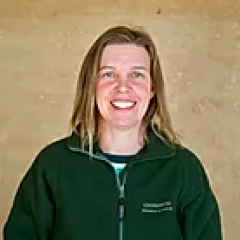Background
Ecosystems are complex, dynamic entities in which many relationships remain enigmatic. However, the importance of biodiversity to ecosystem function and human well-being is clear (Naeem et al. 1999). Despite this, human land use continues to threaten biodiversity, reducing the complexity and functional resilience of ecosystems (Hansen et al. 2001).
Historic land use practices in Australia have left a legacy of degradation, and restoration is required on massive scales (Bradshaw 2012). Degraded landscapes have lost productivity, habitat has been lost through either destruction, disturbance or fragmentation and a large portion of our endemic biodiversity is under threat. Many landscapes are historical by-products where even remnant vegetation has a history of logging, grazing, clearing or other disturbance.
The practice of ecological restoration seeks to restore species composition, community structure (both trophic webs and vegetation strata) and physical conditions (e.g. soil and water) while reducing threats to ecosystem function (e.g. invasive species and over-utilisation), and restoring flow through landscapes (e.g. of genes and habitat) in order to restore full functionality of ecosystems such that they require minimal long-term intervention. Restoration can require reinstatement of ecologically appropriate management, including fire. Restoration can be further complicated when there is a lack of understanding of the pre-disturbance state, including historical species composition and their habitat requirements, as well as future states and conditions under environmental stochasticity and climate variability.
Restoration and management of landscapes for habitat and biodiversity does not necessarily have to mean loss of productive potential for grazing, nor loss of amenity for other human land use. It can result in more resilient, functional landscapes with improved long-term productivity (Scherr & McNeely 2008), and nature-based experiences that contribute to societal appreciation of the importance of landscape conservation. To achieve this a detailed understanding of ecological systems, their thresholds and resilience, and management with clear goals based on quality scientific research is required.
Aims
- Undertake research to guide restoration and management of biodiverse habitat suitable for threatened species within functional landscapes and resilient self-sustaining endemic ecosystems
- Explore the interrelationships between all aspects of restoration and land management
- Investigate relationships between grazing productivity and habitat conservation
- Learn and develop best practice methods for sustainable ecotourism and adventure activities
- Explore the paradigm of the harmonious co-existence of human land use and conservation
- Develop ways to decipher, analyse and map multiple species’ habitat condition over large scales
- Investigate habitat potential for species outside their current distributions
- Examine the ecosystem-wide impacts of species releases including trophic relationships
- Undertake meta-analyses of successes and failures of similar projects nationally and globally
Methodology
Within the Hidden Vale Project are multiple large properties that have significant areas of remnant Regional Ecosystems, various stages of regrowth, habitat plantings and multiple different land uses including cattle grazing, luxury retreats and ecotourism activities such as mountain biking, hiking and camping. This presents an exciting opportunity to develop long-term research that guides habitat restoration, conservation and sustainable land management and ecotourism. Manipulations of grazing, weed control, feral predators, fire, plantings, other habitat attributes and other restoration and management tools can be used to help understand relationships and impacts of restoration, management and wildlife release activities at species, population and ecosystem-levels. Research will involve undergraduate and postgraduate students and many opportunities exist for external collaborators.

Expected outcomes
Outcomes of the overall project are expected to occur on three levels:
- Conservation outcomes such as restoration of habitats and ecosystem processes, improved diversity and abundance, and ecosystems on appropriate successional trajectories;
- Land use sustainability outcomes such as improved land management practices and development of best practice guidelines for ecotourism activities; and
- Scientific and educational outcomes through greater societal appreciation of importance of wild landscapes, student outcomes with involvement in applied research, and substantial scientific contributions to understanding complex systems through long-term research.
References
Bradshaw, CJA, (2012). ‘Little left to lose: deforestation and forest degradation in Australia since European colonization’, Journal of Plant Ecology, vol. 5, no. 1, pp. 109-20.
Hansen, AJ, Neilson, RF, Dale, VH, Flather, CH, Iverson, LR, Currie, DJ, Shafer, S, Cook, R, Bartlein, PJ, (2001).‘Global change in forests, responses of species, communities and biomes’, Bioscience, vol. 51, no. 9, pp. 765-79.
Naeem, S, Chair, FS Chapin III, Costanza, R, Ehrlich, PR, Golley, FB, Hooper, DU, Lawton, JH, ONeill, RV, Mooney, HA, Sala, OE, Symstad, AJ & Tilman, D, (1999). ‘Biodiversity and Ecosystem Functioning: Maintaining Natural Life Support Processes’, Issues in Ecology, no. 4. 1-12.
Scherr SJ & McNeely JA, (2008). ‘Biodiversity conservation and agricultural sustainability: towards a new paradigm of ‘ecoagriculture’ landscapes’, Philosophical Transactions Royal Soc. B-Biol. Sci., vol. 363, pp. 477-94.

